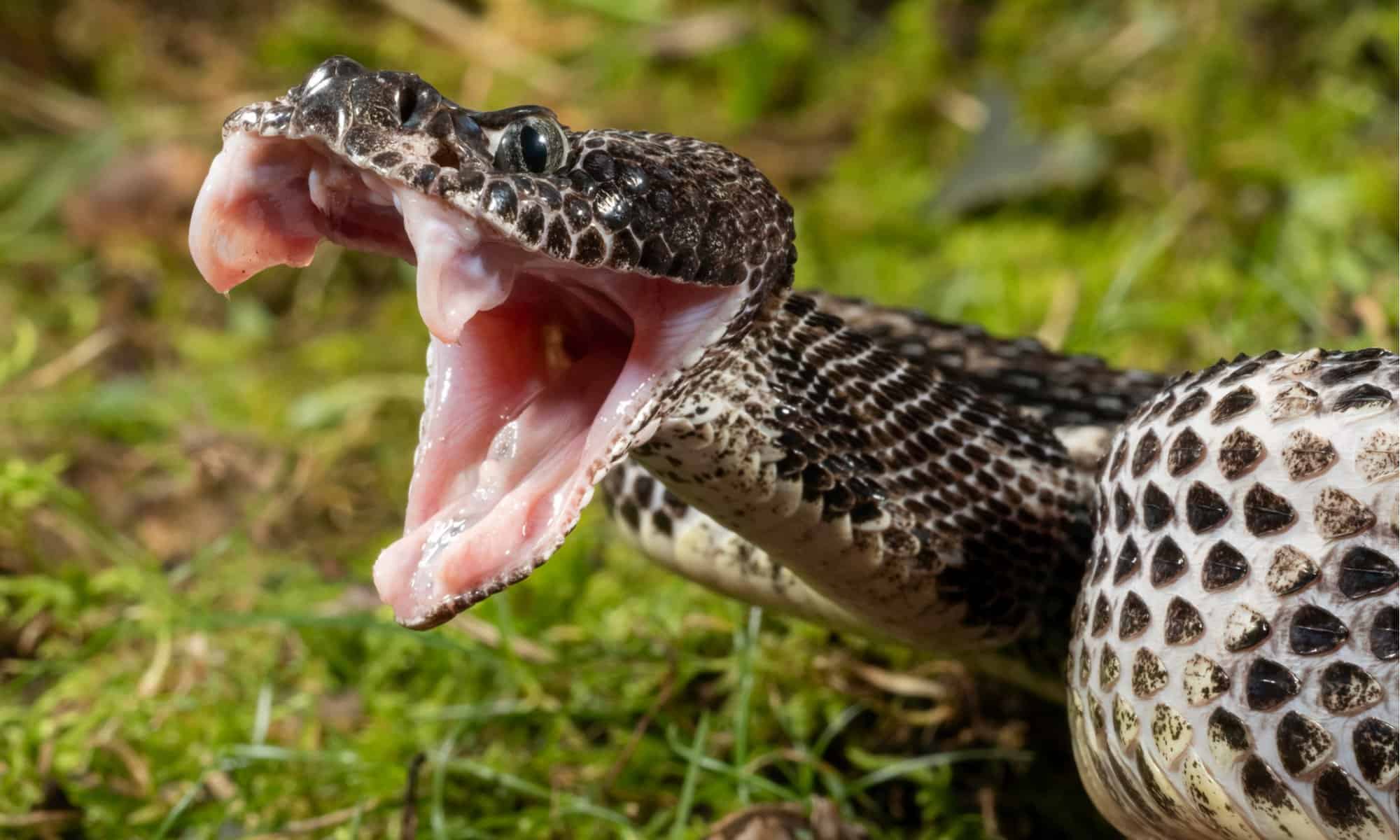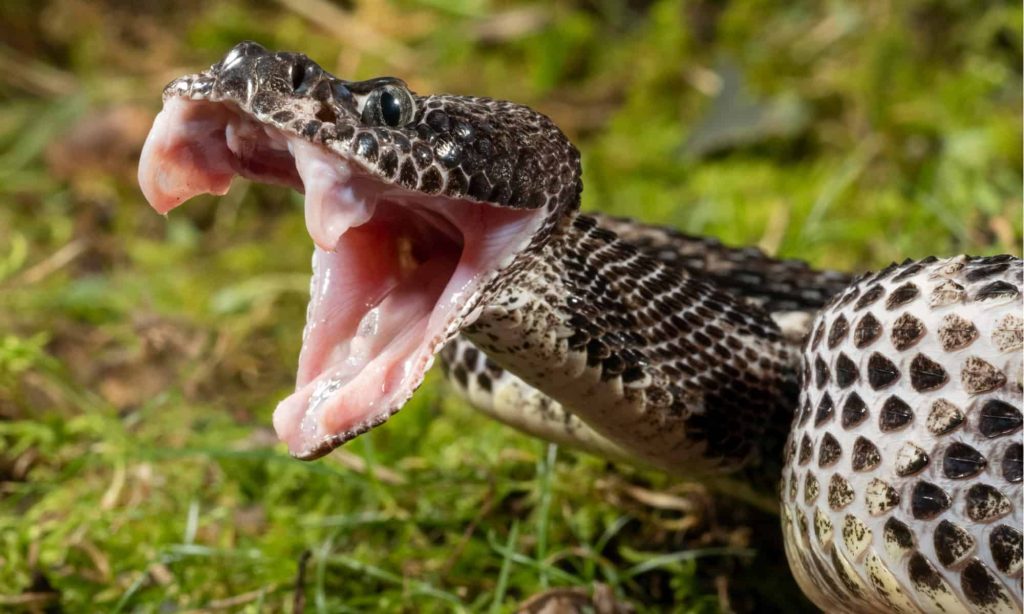Timber rattlesnakes are venomous snakes found in the eastern United States. Known for their distinctive rattling tail, these creatures can strike fear into the hearts of many. But just how dangerous are they? Can a timber rattlesnake kill you? In this article, we will explore the facts and myths surrounding this venomous serpent and uncover the truth about its potential threat to humans.
Yes, a timber rattlesnake can kill you. Their venom is highly toxic and can cause severe pain, swelling, and even death if left untreated. It’s important to give these snakes their space and to seek medical attention immediately if bitten.

Can a Timber Rattlesnake Kill You?
Timber rattlesnakes are one of the most dangerous venomous snakes in North America. They can be found in the eastern part of the United States, from Minnesota to Texas, and from the Great Lakes to the Gulf of Mexico. These snakes are known for their venomous bite, which can be fatal to humans. But can a timber rattlesnake really kill you? Let’s find out.
1. Understanding the Timber Rattlesnake
The timber rattlesnake, also known as the canebrake rattlesnake, is a venomous pit viper. It has distinctive brown or grayish-brown scales with black or dark brown bands. The snake’s head is triangular, and it has two large fangs that are used to inject venom into its prey.
Timber rattlesnakes are ambush predators. They hide in wait for their prey, which includes small mammals, birds, and reptiles. When the prey comes close enough, the snake strikes with lightning-fast speed, injecting venom into the victim.
2. The Venom of a Timber Rattlesnake
The venom of a timber rattlesnake is highly toxic. It contains a mixture of enzymes and proteins that can cause a range of symptoms in humans, including pain, swelling, and bleeding. The venom can also affect the nervous system, causing paralysis and respiratory failure.
The severity of the symptoms depends on the amount of venom injected and the location of the bite. A bite to the torso or head is more dangerous than a bite to the extremities, as the venom can spread more quickly through the bloodstream.
3. Symptoms of a Timber Rattlesnake Bite
If you are bitten by a timber rattlesnake, you may experience the following symptoms:
– Pain and swelling at the bite site
– Redness and bruising
– Nausea and vomiting
– Dizziness and fainting
– Difficulty breathing
– Rapid heart rate
– Low blood pressure
The symptoms can develop quickly, within minutes of the bite. It is important to seek medical attention immediately if you suspect you have been bitten by a timber rattlesnake.
4. Treatment for a Timber Rattlesnake Bite
Treatment for a timber rattlesnake bite involves administering antivenom as soon as possible. Antivenom is a medication that neutralizes the venom in the bloodstream, preventing further damage to the body.
In addition to antivenom, doctors may also recommend pain relievers, anti-inflammatory drugs, and antibiotics to prevent infection. The bite site may need to be cleaned and debrided to remove any dead tissue.
5. Prevention of Timber Rattlesnake Bites
The best way to prevent a timber rattlesnake bite is to avoid contact with the snakes. If you are hiking or camping in an area where timber rattlesnakes are known to live, take the following precautions:
– Wear protective clothing, such as boots and long pants
– Stay on designated trails and avoid tall grass and brush
– Use a flashlight at night to avoid stepping on a snake
– Do not try to handle or capture a timber rattlesnake
6. Benefits of Timber Rattlesnakes
Despite their venomous bite, timber rattlesnakes play an important role in their ecosystem. They help control rodent populations, which can carry diseases and damage crops. They also serve as prey for other animals, such as hawks and eagles.
Timber rattlesnakes are also an important cultural symbol for some Native American tribes, who view them as sacred animals.
7. Timber Rattlesnakes vs. Other Venomous Snakes
Timber rattlesnakes are not the only venomous snakes in North America. Other venomous snakes include copperheads, cottonmouths, and various species of rattlesnakes, including the eastern diamondback rattlesnake.
While all venomous snakes pose a risk to humans, timber rattlesnakes are considered one of the most dangerous due to the toxicity of their venom.
8. Conclusion
In conclusion, a timber rattlesnake can indeed kill you if you are bitten and do not receive prompt medical attention. The venom of these snakes is highly toxic and can cause a range of symptoms, from pain and swelling to respiratory failure and death.
It is important to take precautions when hiking or camping in areas where timber rattlesnakes are known to live, and to seek medical attention immediately if you suspect you have been bitten.
Despite their danger to humans, timber rattlesnakes are an important part of their ecosystem and play a vital role in controlling rodent populations.
Frequently Asked Questions
What is a timber rattlesnake?
A timber rattlesnake is a venomous reptile that is native to eastern North America. It is a large snake that can grow up to 6 feet in length and has distinctive black and brown markings. The rattlesnake gets its name from the rattling sound it makes with the buttons at the end of its tail.
Timber rattlesnakes are an important part of the ecosystem, but they can be dangerous if people come into contact with them. It is important to be aware of the risks associated with timber rattlesnakes and to take precautions when in their habitat.
What are the symptoms of a timber rattlesnake bite?
The symptoms of a timber rattlesnake bite can vary depending on the amount of venom injected and the location of the bite. Common symptoms include intense pain, swelling, and bruising at the site of the bite. Other symptoms may include nausea, vomiting, sweating, and a rapid heartbeat.
If you are bitten by a timber rattlesnake, it is important to seek medical attention immediately. The faster you receive treatment, the better your chances of a full recovery.
How can you avoid encounters with timber rattlesnakes?
The best way to avoid encounters with timber rattlesnakes is to stay alert and aware of your surroundings when you are in their habitat. Look out for signs of snakes such as shed skins, holes, and tracks. Wear sturdy boots and pants when hiking or working in areas where rattlesnakes are known to live.
If you do encounter a timber rattlesnake, it is important to give it plenty of space and not to provoke it. Do not attempt to handle or capture the snake, as this can increase the risk of a bite.
What should you do if you encounter a timber rattlesnake?
If you encounter a timber rattlesnake, the best thing to do is to give it plenty of space and avoid provoking it. Move slowly and calmly away from the snake, keeping a safe distance. Do not attempt to handle or capture the snake, as this can increase the risk of a bite.
If the snake is in a public area where it poses a risk to humans, contact a wildlife control professional to safely remove the snake.
Can a timber rattlesnake kill you?
While a timber rattlesnake’s venom can be dangerous, it is rarely fatal to humans. Most timber rattlesnake bites are not fatal, but they can cause serious health problems if left untreated. If you are bitten by a timber rattlesnake, it is important to seek medical attention immediately.
It is important to remember that timber rattlesnakes are an important part of the ecosystem and play an important role in controlling rodent populations. While it is important to be aware of the risks associated with timber rattlesnakes, it is also important to respect and appreciate these fascinating creatures.
The Timber Rattlesnake is NOT Aggressive!
In conclusion, the timber rattlesnake can certainly be a deadly creature. Its venom and large size make it a formidable predator, and anyone who encounters one should exercise caution. However, it’s important to remember that these snakes are not inherently aggressive, and will only attack if they feel threatened or cornered.
Overall, the best way to stay safe around timber rattlesnakes is to be aware of their habitat and behavior. Avoid walking through tall grass or rocky areas where they might be hiding, and never try to handle or approach a snake in the wild. With a little bit of caution and respect, it’s entirely possible to coexist with these fascinating creatures without putting yourself in harm’s way.


